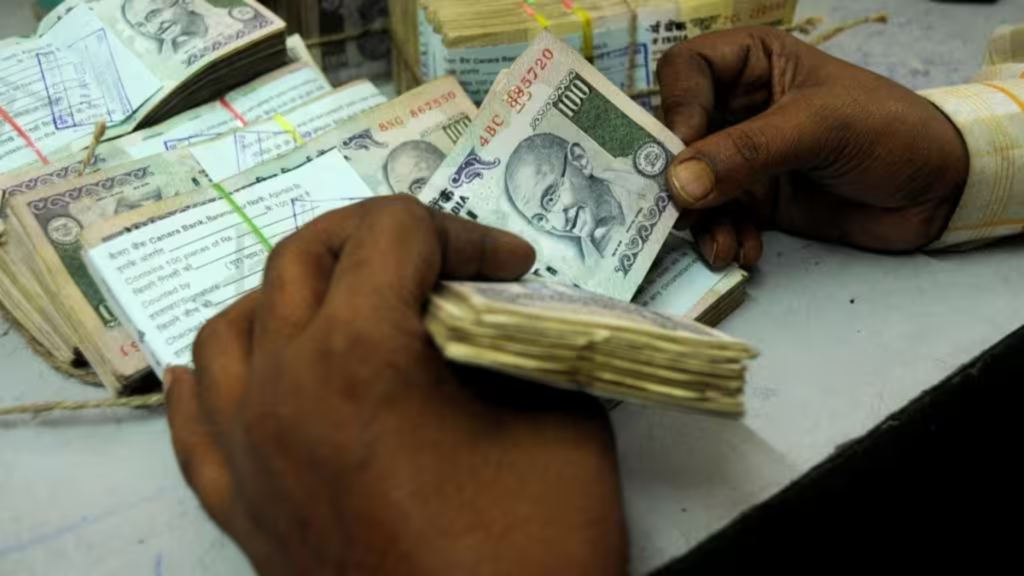The Indian banking sector is poised for resilience as it navigates through the intricacies of fiscal years 2024-2025, according to a recent report by ICRA. In the wake of the noteworthy performance in FY2023-24, the sector is expected to maintain a positive trajectory, propelled by robust asset quality, steady credit growth, and evolving market dynamics.

Comfortable Asset Quality and Limited NPA Additions
The cornerstone of this resilience lies in the comfortable asset quality levels, with both corporate and retail portfolios showcasing commendable performance in terms of delinquencies. This translates into limited net Non-Performing Asset (NPA) additions, contributing to the sector’s overall stability.
Anticipated Credit Growth and Sector Dynamics
A key driver for the upcoming fiscal years is the expected healthy credit growth of 12-13%, building on the momentum witnessed in FY2023. The demand in the services and retail segments is projected to fuel this growth, providing a positive outlook for the banking sector.
However, challenges loom in the form of the upward repricing of the deposit base in H2 FY2024, potentially leading to a compression in interest margins. While this repricing is anticipated to conclude by the end of FY2024, the specter of a rate cut from August 2024 could exert downward pressure on lending yields, thereby continuing to impact interest margins in FY2025.
Operating Profits and Moderation in FY2024-25
ICRA foresees operating profits for banks remaining steady, supported by loan growth. However, a mild moderation is expected, with operating profitability stabilizing at 1.8-2.0% in FY2024-25 compared to 2.2% in FY2023. Despite this moderation, the sector’s operating profitability remains resilient, providing a solid foundation for sustained growth.
Credit Expansion Challenges Beyond FY2024
Aashay Choksey, Vice President at ICRA, emphasizes the robustness of incremental credit expansion thus far in FY2024. However, he cautions that credit growth may decelerate beyond this year due to tight liquidity conditions. Additionally, factors such as weaker credit demand in the agriculture segment, subdued export demand, and increased risk-weights to unsecured consumer lending and NBFC segments may collectively temper credit traction.
NPA Generation and Improved Metrics
While the banking sector is expected to witness a mild increase in gross-fresh NPA generation in FY2025, the corporate book’s asset quality is anticipated to hold up, keeping slippages granular. The headline metrics of the sector, Gross NPAs (GNPAs) and Net NPAs (NNPAs), are projected to decline to 2.1-2.5% and 0.5-0.6%, respectively, by March 2025. This reflects a positive trend from the expected levels as of March 31, 2024.
Steady Credit Costs and Capitalization Levels
Credit costs are estimated to remain benign at 0.7-0.8% of advances in FY2024-25, aligning with the levels observed in FY2023. This stability in credit costs is anticipated to allow banks to maintain their Return on Assets (RoAs) at 1.0-1.2%, ensuring financial health.
Despite recent regulatory changes, including increased risk weights and a transition to the estimated credit loss (ECL)-based framework, the capital position for most banks remains comfortable. ICRA estimates the Tier-I capital of the banking sector at 14.5-14.9% as of March 2025. Improvements in solvency levels are expected to flatten out to 4-6% in FY2024-25.
Cautious Outlook Amid Potential Challenges
However, a note of caution is sounded by ICRA, highlighting potential challenges such as higher interest rates impacting asset quality, unforeseen regulatory changes, global economic slowdowns affecting export-oriented sectors, and a tighter liquidity environment causing unexpected moderation in profitability margins.
In conclusion, the Indian banking sector appears poised for resilience in the coming fiscal years, balancing challenges with its intrinsic strengths. The interplay of asset quality, credit growth, and regulatory dynamics will shape the sector’s journey, and prudent management will be key in navigating the evolving landscape. As the fiscal years unfold, the sector stands at the cusp of continued growth and stability.